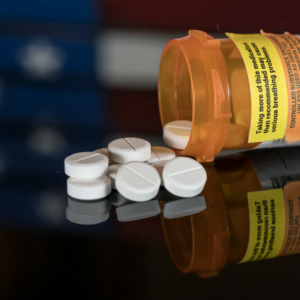by Gabriel Levitt, President, PharmacyChecker.com and Prescription Justice | May 3, 2018 | Big Pharma
 Central to Big Pharma’s lobbying efforts is relying on drug company-funded “nonprofit” groups to sanitize their goals under the veneer of charity. Investigative reporting in Tarbell, a media organization founded by healthcare activist Wendell Potter, shows that drug companies, namely Eli Lilly, successfully lobbied the Obama administration to make Internet companies embrace policies that curtail online access to affordable medication.
Central to Big Pharma’s lobbying efforts is relying on drug company-funded “nonprofit” groups to sanitize their goals under the veneer of charity. Investigative reporting in Tarbell, a media organization founded by healthcare activist Wendell Potter, shows that drug companies, namely Eli Lilly, successfully lobbied the Obama administration to make Internet companies embrace policies that curtail online access to affordable medication.
These pharma-funded nonprofits engage fellow industry-tied patient groups, the media and people, promoting the idea that rogue online pharmacies and safe international online pharmacies are the same thing. Their message: don’t buy lower-cost medications online from other countries because it’s too dangerous.
That message is an outright lie.
(more…)
Tagged with: Alliance for Safe Online Pharmacies, ASOP, Big Pharma, Eli Lilly, LegitScript, Obama Administration, tarbell
by Gabriel Levitt, President, PharmacyChecker.com and Prescription Justice | Mar 9, 2018 | Drug Safety
 According to a new study, it turns out that, potentially, millions of people should have been prescribed over-the-counter drugs—not addictive narcotics. That’s a major finding considering 600,0000 Americans have died from drug overdose between 1999-2016. The Journal of the American Medical Association (JAMA) study shows that over-the-counter medications, such as ibuprofen, acetaminophen, aspirin and naproxen may work better than the hard, addictive stuff, such as Vicodin, Oxycontin, and Fentanyl.
According to a new study, it turns out that, potentially, millions of people should have been prescribed over-the-counter drugs—not addictive narcotics. That’s a major finding considering 600,0000 Americans have died from drug overdose between 1999-2016. The Journal of the American Medical Association (JAMA) study shows that over-the-counter medications, such as ibuprofen, acetaminophen, aspirin and naproxen may work better than the hard, addictive stuff, such as Vicodin, Oxycontin, and Fentanyl.
We recognize and respect the role that properly prescribed prescription narcotics have played and will continue to play in pain management. However, we also believe that Big Pharma makers and sellers of opioids caused this national crisis of drug addiction by helping to create looser prescribing rules. In other words, while at one-time opioid medications were viewed as a last resort to treat serious pain, drug companies pushed medical education that led to the prescribing of opioid drugs. The U.S. Centers for Disease Control and Prevention has revised its guidelines to encourage far tighter prescribing practices, but, as this study indicates, their revisions came way too late.
Patients Who Took Opioids
The JAMA study looked at 248 patients with varying levels of pain, back pain being the most prevalent form affecting 65% of patients. Others had pain associated with hip, knee and that associated with osteoarthritis. One group of patients were prescribed opioid medications. They started with fast acting morphine, a combination of hydrocodone and acetaminophen, or oxycodone. Long acting medications, morphine or oxycodone, were used when the short acting treatments were not working. When those did not work, fentanyl patches were prescribed.
Patients Who Took Non-opioids
Another group took NSAIDs. If NSAIDs did not work, then the group took other prescription medications, such as gabapentin (Neurontin) or pregabalin (Lyrica). If those didn’t work, then tramadol, which is an opioid-based painkiller but less addictive than the ones in the opioid group.
Results of the Study
Patients in the non-opioid group reported equal or better results in pain alleviation than patients in the opioid group. Admittedly, I’m confused because tramadol was in the non-opioid group, even though it’s an opiate-based medication. Also, one shortcoming variable of the study is that patients knew what medications they were taking, which could have biased their reporting.
Overall, the study strongly demonstrates that millions who were prescribed strong opioid drugs and became hooked could just as well have been treated initially with regular OTC pain medications. Not surprisingly, patients could have also saved billions of dollars over the last few decades by taking aspirin instead of brand-name prescription opioids.
This has really caught my attention because the industry-funded groups like the Alliance for Safe Online Pharmacies and Partnership for Safe Medicines equates importation from Canada with the opioid crisis. Instead of urging people to seek alternatives to opioids, the pharmaceutical industry propagates the senseless idea that increasing imports of lower cost (non-pain) medications from Canada will worsen the opioid crisis. They would rather point fingers than address the sickness of their complicity in creating the drug addiction crisis in the first place.
Tagged with: Alliance for Safe Online Pharmacies, CDC, JAMA, NSAIDs, opioids, OTC, Partnership for Safe Medicines
by Gabriel Levitt, President, PharmacyChecker.com and Prescription Justice | Jul 28, 2017 | Big Pharma

Voters want importation to be legal.
Shocking. Contrary to the outcry against high drug prices in the United States and the findings of the Kaiser Family Foundation, a recent survey conducted by the Alliance for Safe Online Pharmacies (ASOP or “Buy Safe Rx”), the Pharma-funded nonprofit, found that a majority of consumers (59%) oppose legalizing drug importation “after being provided with information specifically pertaining to Canadian online pharmacies.” Information, huh? First, let’s talk about an objective survey on the issue.
In May of this year, the Kaiser Family Foundation issued a more comprehensive, larger survey that found the complete opposite result of ASOP: 72% of respondents support legalizing drug importation from Canada, with Democrats and Republicans agreeing on this issue.
Also, despite the federal prohibitions, nineteen million Americans say they have imported lower cost medication from other countries.
The ASOP “survey” respondents were provided fear-inducing “statistics” surrounding Canadian online pharmacies before asking the survey questions. One such “factoid” gives you a window into the scheming nature of the whole project: (more…)
Tagged with: Alliance for Safe Online Pharmacies, ASOP, Big Pharma, Kaiser Family Foundation, survey
 Central to Big Pharma’s lobbying efforts is relying on drug company-funded “nonprofit” groups to sanitize their goals under the veneer of charity. Investigative reporting in Tarbell, a media organization founded by healthcare activist Wendell Potter, shows that drug companies, namely Eli Lilly, successfully lobbied the Obama administration to make Internet companies embrace policies that curtail online access to affordable medication.
Central to Big Pharma’s lobbying efforts is relying on drug company-funded “nonprofit” groups to sanitize their goals under the veneer of charity. Investigative reporting in Tarbell, a media organization founded by healthcare activist Wendell Potter, shows that drug companies, namely Eli Lilly, successfully lobbied the Obama administration to make Internet companies embrace policies that curtail online access to affordable medication.



